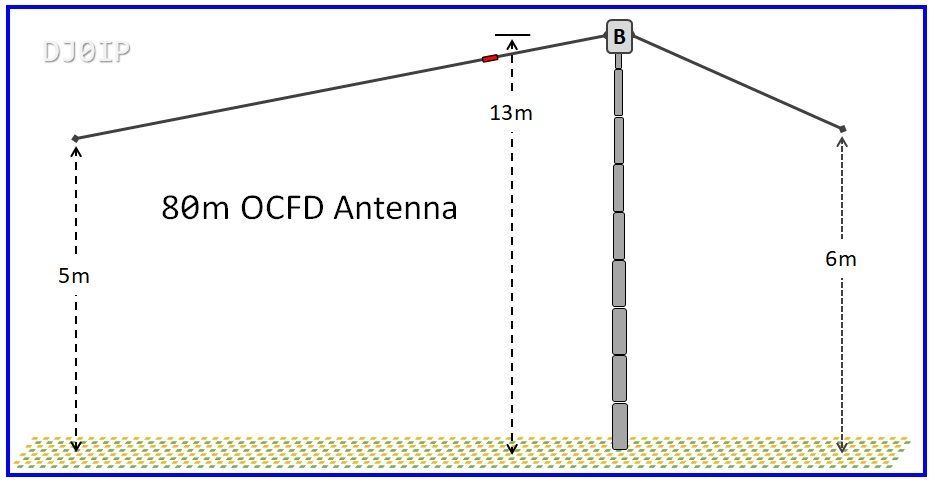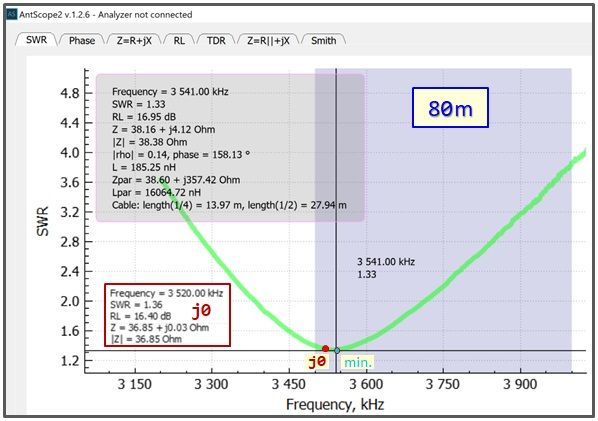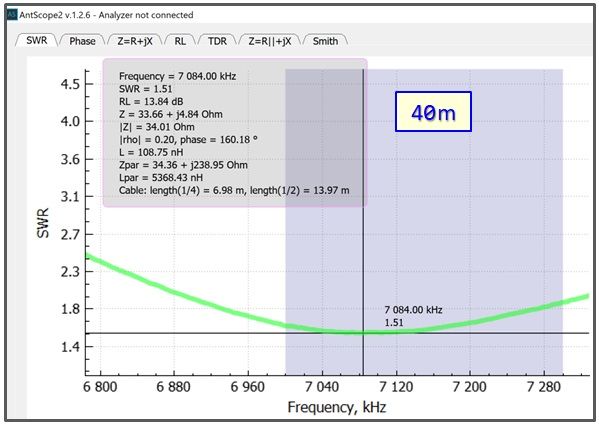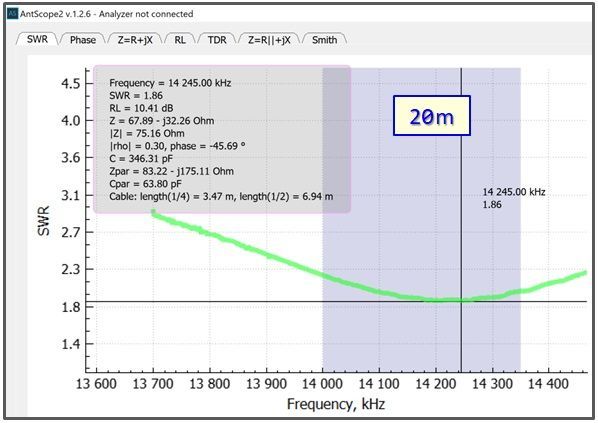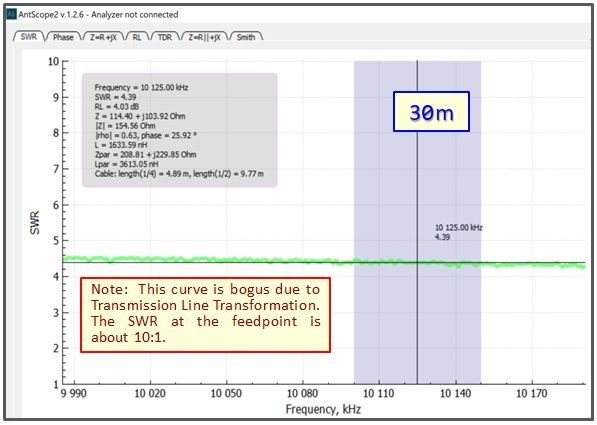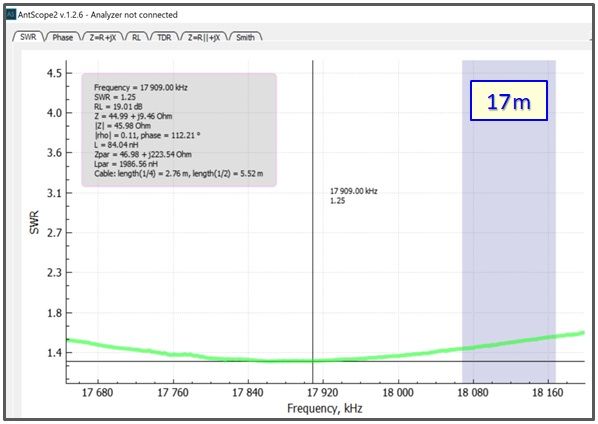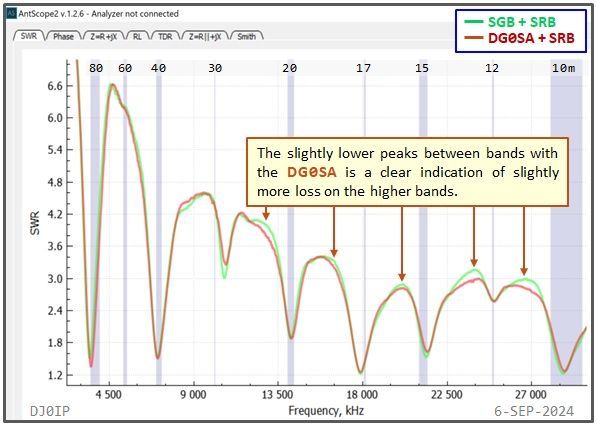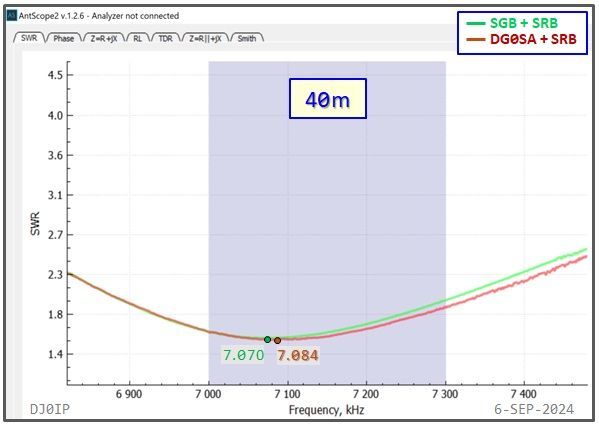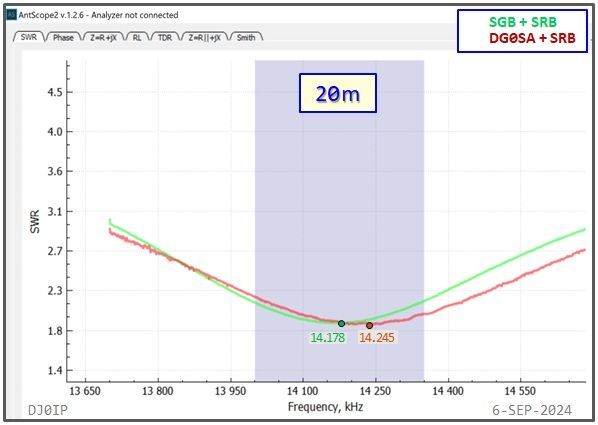In order to determine how much more Common Mode Impedance (CMI) the DG0SA choke required, I added several Maxwell Chokes one at a time and measured the frequency of minimum SWR.
Each choke has a CMI of about 1k Ohms. As can be seen from the chart, each choke resulted in a reduction of SWRmin up to the 4th choke.
When I added the 5th choke, no further reduction in SWRmin occurred.
The sweet spot is 4 chokes, or and additional 4k Ohms of Common Mode Impedance.


